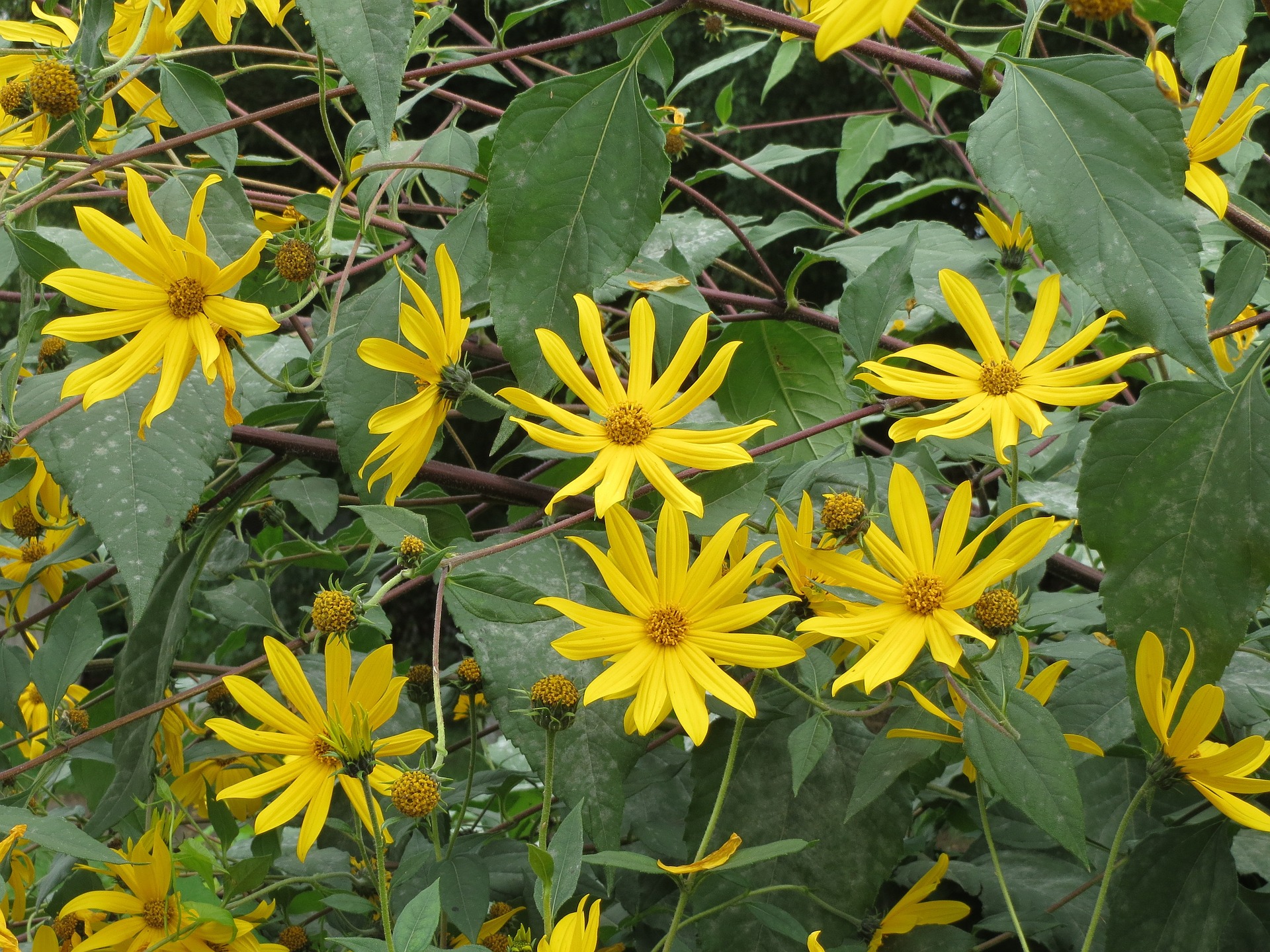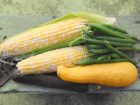Sunchoke or Jerusalem Artichoke, Sunroot, Lambchoke, Topinambur, Girasol, Girasole, or Gerasole (Helianthus tuberosus) is a beautiful hardy perennial plant that is native to North America and has a delicious edible tuber. Grown by Native Americans, Sunchokes can still often be seen growing wild along roads and in meadows but are grown commercially mostly in Washington State.
Description and Cultivation:
- Plants grow up to 10 feet and have clusters of bright yellow flowers which resemble small sunflowers.
- Although Sunchokes can grow many places in North America, they yield better in climates that have a cold season.
- The tubers should be planted in the spring, in full sun, in soils that suit corn and potatoes. Tubers with 2 or 3 buds should be set about 15-24 inches apart and 4 inches deep.
- Harvesting occurs after the first fall frost. Plants can be mowed, grazed (sheep love them), or cut down and tubers carefully dug. The skin of the tuber is very delicate; so take care not to bruise it.
- After harvest, the tubers should be immediately placed in cold storage, to avoid moisture loss. They can be stored for months under proper conditions (31° to 32° F. and 90% to 95% humidity).
- Yields can be up to 7 tons per acre.
- There are upwards of a hundred or more types (no defined cultivars though) of Sunchoke, some of which are said to be less knobby, and so easier to peel. One such type is called “Clearwater”. Other common types are: ‘Fuseau’, ‘Jerusalem White’, Veitch’s Improved Long White’, ‘Sutton’s New White’, ‘Mammoth French White’ and ‘French White Improved’.
Uses and Benefits:
- The tuber is the edible part of the plant and can be dug up in the fall or winter. Similar in taste to a water chestnut, the sweet and crisp tuber can be eaten raw, used in salads, or cooked in the same way you would a potato.
- Because the principle storage carbohydrate in sunchoke is inulin rather than starch, the tubers are a good option for diabetics. Rather than starch being converted to glucose in the digestive tract, the inulin is converted to fructose, which is more tolerable for some.
- Rabbits like the tops and tubers, if you are interested in growing your own rabbit food.
- Sunchokes are virtually pest free.
- The flowers attract beneficial insects and the seeds are loved by birds.
- Native Americans ate the flowers for rheumatism and made a tea from the leaves and stems.
- Some other medicinal properties of this plant are: appetite suppressant, immune stimulant, anti-diabetic, anti-hypoglycemic -stabilizes blood glucose and improves bacteria ecology in the colon.
- Sunchoke contains much more iron than other tubers such as carrots, potatoes, beets, and turnips. The tubers also contain potassium, calcium, magnesium, sodium, fluorine, chromium and other minerals and are rich in vitamins such as В1, В2, В6, С, РР and carotinoids. Sunchoke has 60-70 mg of carotinoid per one kilogram.
- According to one source the sunchoke spirit called “Topinambur” also “helps to treat gout, urolithiasis, anemia, chondrocalsynovitis, and obesity. The Jerusalem artichoke decoction reduces sugar level in blood, reduces blood pressure, increases hemoglobin and has a positive effect on the pancreas. Sunchoke must be included in the diet of those people who live in big polluted cities, since it is capable of neutralizing the negative effects of the environment. Jerusalem artichoke can remove salts of heavy metals, toxins, radionuclide and cholesterol excesses. Such an antitoxic effect of Helianthus tuberosus is conditioned by the combined actions of inulin and cellulose that are part of helianthus tuberosus’s composition.”
Find folks growing and selling Sunchokes on Pick-A-Pepper.com!
Similar Stories:
- 20 Perennial Crops to Plant Now and Enjoy For A Lifetime.
- Winter is Artichoke Season
- Harvesting Sweet Potatoes
- How To Build a Cold-Frame at Home
- Is Sweet Potato a Superfood?




